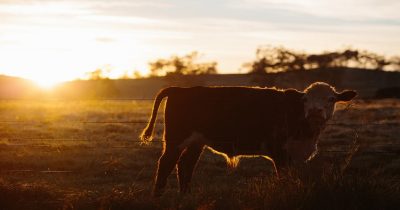The Farming Apocalypse Is Almost Here
by Doug Casey, Casey Research:

It’s official. We’re now in unprecedented markets – in at least one commodities sector.
Economists from the University of Illinois recently declared a state of emergency. The two professors – Scott Irwin and Todd Hubbs – noted in an industry publication: “The inescapable conclusion is that [this recent big event] is of truly historic dimensions and what has transpired in [this part of America] can be labelled in good faith a ‘black swan’ event.”
I’ll tell you all the details in a moment.
But first, let’s go over why black swans are a big deal.
A black swan is an event that comes as a surprise and has a major effect. Black swans are hard to predict, and they tend to dominate headlines and captivate the world when they unfold.
Think the Arab oil embargoes in the 1970s and the subprime mortgage collapse in 2008.
Celebrated author and risk analyst Nassim Taleb showed how black swan events can be immensely profitable. Markets don’t expect black swans, so they usually don’t price them into economic models.
Taleb noted this creates great buying opportunities. In 2007, for example, no one expected mortgages to crater. So betting on the fall of the market (through options or other instruments) was extremely cheap.
These bets can turn $1,000 into a million or more. If they don’t pan out, the loss is small. But if they work, the upside is enormous.
The Latest Black Swan
We’ll find the latest black swan in a market that’s been chronically depressed the last seven years.
And that’s agriculture.
Prices for almost all agricultural commodities have been falling steadily since 2012. Coffee, sugar, wheat, cattle, and hogs have all plunged.
Corn was hit particularly hard. Some futures contracts for corn hit 42-year lows earlier this year.
But that all changed in spring, when massive snowfalls hit the Midwest… followed by torrential rains.
The flooding is so bad that shipping has been shut down on major rivers like the Mississippi.
It’s also been horrible for farmers.
That’s where the research from professors Irwin and Hubbs from the University of Illinois comes in.
Below is an analysis they recently put together. It shows how U.S. corn acreage is currently being planted late.

A full 50% of U.S. corn acreage still hasn’t been planted at a time of year when corn farmers are usually wrapping up their planting.
It’s so bad that economists in the disaster zone are calling it a black swan.
The market certainly wasn’t expecting this. A few months ago, forecasts were calling for a record corn crop.
Since hitting a high of over $8 per bushel in mid-2012, corn fell steadily to near $3.50 most of the last five years. Prices have been in the dumps. Remember, some futures hit a 42-year low just a few months ago.
Corn has responded to the recent bad news – a little. As I write, corn is up about 20% from the doldrums earlier this year, sitting at $4.56 per bushel.
But it’s still a far cry from the 130% gains we saw on delayed planting in the ’90s.
And remember, planting delays are worse this year. In fact, this is very likely to be the worst year for unplanted corn ever seen in America.
This Move Is Just the Beginning
If this black swan runs its course, the 20% rise in price so far is just the beginning…
To boot, on top of that, problems are emerging with corn supply elsewhere in the world. France, a top-five corn exporter, was just hit with massive storms. It’s early, but reports suggest French farmers were devastated by this torrent.
At the same time, China has been hit with an African swine fever epidemic… After killing off local hogs to fight the disease, Chinese pork buyers are turning to America for imports. Shipments of U.S. hogs to China rose 1,000% this year.
And to cap it off, pigs eat corn. So rising demand for U.S. hogs from China means more demand for corn feed – at the same time as local corn crops are devastated by flooding.
Loading...



